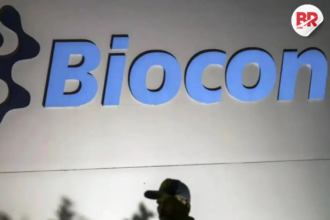
Tata Motors has reported a 62.2% drop in net profit for the April–June quarter (Q1 FY26). The company earned ₹4,003 crore, compared to ₹10,587 crore in the same quarter last year.
The big fall in profit was mainly due to:

- Lower sales volumes across different vehicle segments
- A decline in earnings from Jaguar Land Rover (JLR)
- The absence of a one-time ₹4,975 crore gain that came last year from the sale of Tata Motors Finance Ltd after it merged with Tata Capital Ltd
Company’s statement
Group CFO P.B. Balaji said that despite economic challenges, Tata Motors still managed to stay profitable. He added that the company expects improvement in the coming months as tariffs become clearer and festive season demand picks up.
Jaguar Land Rover Performance
- JLR’s revenue fell 9.2% to £6.6 billion due to new US tariffs on UK- and EU-made vehicles and the planned phase-out of older Jaguar models.
- Outgoing JLR CEO Adrian Mardell said the new UK-US and EU-US trade agreements will help reduce the tariff impact in the future.
- JLR will invest £3.8 billion this year to develop next-generation electric vehicles, including new electric Range Rover and Jaguar models.
Passenger Vehicle (PV) Business
- PV wholesale volumes dropped 10.1% to 1,24,800 units.
- The decline was due to overall weak market demand and model updates for the Altroz, Harrier, and Safari.
- However, the electric vehicle (EV) segment grew, supported by new launches and rising customer interest.
- Tata Motors plans to launch new hatchbacks and SUVs in the second half of the year to boost PV sales.
Read more: India’s Auto Sales Fall 4.3% in July, Tractors Buck the Trend with 11% Growth
Commercial Vehicle (CV) Business
- CV wholesale volumes fell 6% to 88,000 units.
- Weak demand in key segments and slower fleet replacement affected sales.
- Buses, vans, and the international market performed better.
- The company expects recovery in the second half of FY26 as monsoon conditions improve, interest rates ease, and infrastructure projects speed up.
Tata Motors faced a challenging Q1 due to weak demand, lower volumes, and trade tariffs affecting JLR. But the company remains confident about recovery in the second half of the year, with a focus on EVs, new model launches, and improved market conditions.












